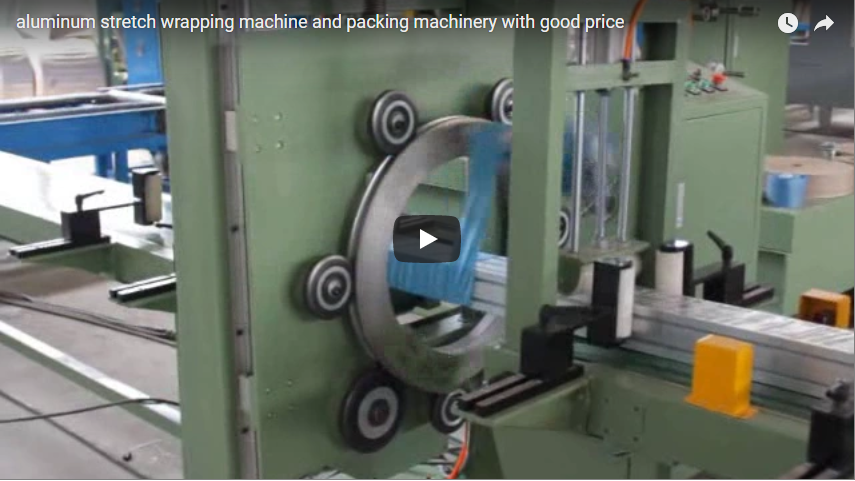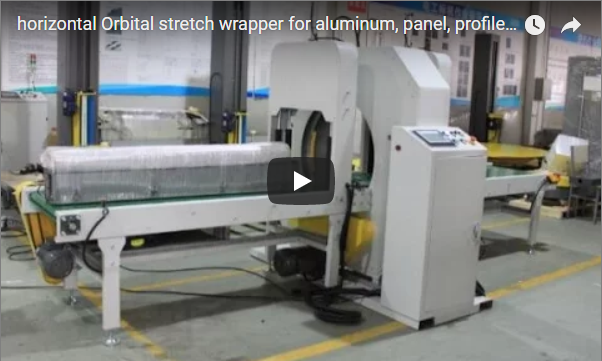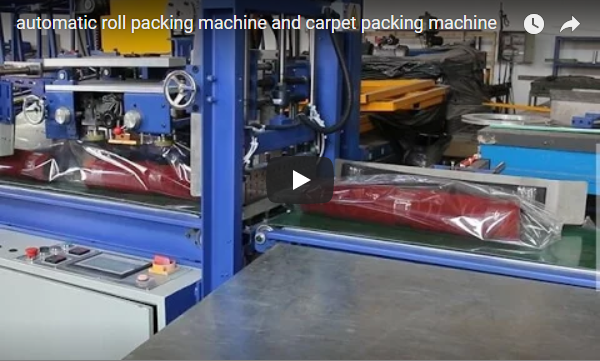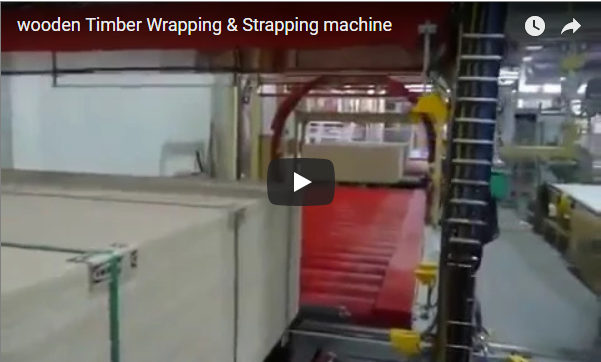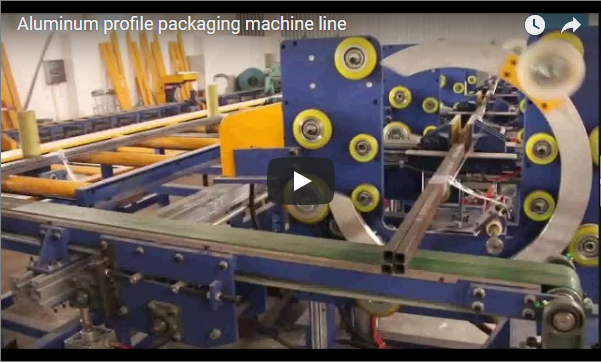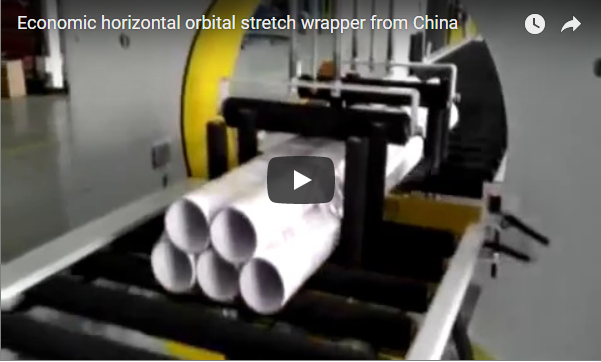Optimizing Polywood Packaging: A Deep Dive into Automated Feeding and Orbital Stretch Wrapping Lines
Engineered wood products like polywood demand robust packaging solutions that address their unique characteristics, including significant weight, variable dimensions, and susceptibility to environmental damage. The automated packing line showcased in the video demonstrates a state-of-the-art approach, integrating precision material handling via an automated timber block feeding system with the comprehensive protection of orbital stretch wrapping technology. This synergy aims to streamline operations, enhance load integrity, minimize manual handling, and ultimately improve the efficiency and reliability crucial in today's competitive industrial packaging landscape.
1. The Challenge: Effectively Packaging Polywood Products
Handling and shipping polywood presents several key challenges that necessitate specialized packaging solutions:
- Weight and Dimensions: Polywood bundles are often heavy and long, requiring stable support and secure containment.
- Surface Protection: Preventing scratches, abrasions, and damage from moisture or UV exposure during transit and storage is critical.
- Load Stability: Ensuring bundles remain unitized and stable, especially when stacked or handled multiple times, is paramount for safety and product integrity.
- Efficiency Demands: Manual or semi-automated processes can struggle to keep pace with production output, creating bottlenecks.
2. System Overview: Automated Workflow for Enhanced Throughput
The featured polywood packing line typically follows an automated sequence designed for efficiency and minimal operator intervention:
- Infeed Conveyor: Bundles arrive from the production line.
- Automated Timber Block Placement: Strategically positioned support blocks are placed beneath the bundle.
- Orbital Stretch Wrapping: The bundle, now with support blocks, is conveyed through the orbital wrapper for complete film encapsulation.
- Outfeed Conveyor: The fully wrapped and protected bundle is transported for storage or shipment.
3. Deep Dive: Automated Timber Block Feeding System
The automated placement of timber support blocks is a foundational step for creating a stable, easily handleable polywood bundle.
3.1. Purpose and Functionality
Timber blocks elevate the polywood bundle, allowing crucial forklift access for handling and preventing direct contact with the ground, which can introduce moisture or contaminants. The automated feeder precisely dispenses blocks from a magazine and positions them at predetermined locations beneath the bundle as it pauses or moves along the conveyor. This ensures consistent support geometry for every bundle.
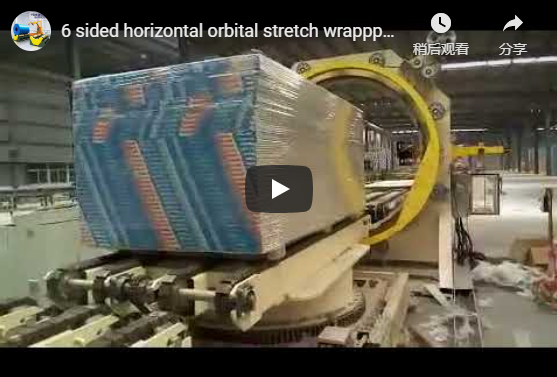
3.2. Key Components and Design
- Block Magazine/Hopper: Stores a supply of timber blocks.
- Dispensing Mechanism: Selects and feeds individual blocks.
- Positioning System: Typically uses pneumatic or servo-driven actuators to place blocks accurately.
- Sensors: Detect bundle presence and position for precise timing.
- Control Integration: Interfaces with the main line PLC for synchronized operation.
3.3. Technical Specifications Example
| Parameter | Typical Specification Range | Benefit |
|---|---|---|
| Block Size Compatibility | 80x80mm to 120x120mm | Accommodates various load requirements |
| Placement Accuracy | ± 5 mm | Ensures consistent support and stability |
| Cycle Time (per bundle) | 15-30 seconds | Matches typical line speeds |
| Control System | PLC Integrated | Seamless operation within the automated line |
| Actuation | Pneumatic / Servo | Reliable and precise positioning |
3.4. Operational Advantages
- Consistency: Eliminates human error in block placement, leading to uniform load bases.
- Labor Reduction: Automates a repetitive and potentially strenuous manual task.
- Throughput Increase: Integrates seamlessly, preventing bottlenecks associated with manual block placement.
4. Deep Dive: Orbital Stretch Wrapping Technology
Orbital stretch wrapping is the core protective element, ideally suited for long products like polywood bundles.
4.1. Principle of Operation
Unlike turntable wrappers where the load rotates, an orbital wrapper features a ring carrying the stretch film roll that rotates around the stationary or continuously moving product. This allows for complete, six-sided coverage (top, bottom, sides, leading/trailing ends) efficiently.
4.2. Key Components and Design
- Rotating Ring Assembly: Carries the film carriage and rotates around the product path.
- Film Carriage & Pre-Stretch Unit: Holds the LLDPE stretch film roll and incorporates motorized rollers to pre-stretch the film (often up to 300%), optimizing film usage and load containment force. Understanding film properties, like those outlined by sources such as the Plastics Industry Association, is key to maximizing performance.
- Film Clamping & Cutting System: Automatically grips the film at the start of the cycle and cuts/seals it at the end.
- Conveyor System: Transports the bundle through the wrapping ring.
- Control Panel (HMI): Allows operators to set parameters (wrap patterns, tension, pre-stretch, rotation speed).
4.3. Technical Specifications Example
| Parameter | Typical Specification Range | Benefit |
|---|---|---|
| Ring Diameters Available | 1400mm, 1600mm, 2000mm, 2500mm+ | Accommodates various bundle cross-sections |
| Max. Bundle Dimensions (LxWxH) | Up to 12m x 1.2m x 1.2m (example) | Handles large-format polywood products |
| Ring Rotation Speed | 30 - 70 RPM | Enables high throughput rates |
| Film Type | LLDPE Stretch Film | Standard material for strength and cling |
| Film Width | 250mm / 500mm | Standard industry sizes |
| Film Pre-stretch Ratio | Variable, up to 300% | Maximizes film yield, improves load containment |
| Power Requirements | 480V/3Ph/60Hz (example) | Standard industrial power |
| Control System | PLC with HMI Touchscreen | User-friendly operation, recipe storage, diagnostics |
4.4. Protection Benefits
- Moisture & Dust Barrier: Fully encapsulated load prevents water damage and contamination.
- Abrasion Resistance: Film layers protect polywood surfaces during handling.
- Unitization & Stability: Tightly wraps the bundle and timber blocks together, preventing shifting and improving stackability.
- UV Protection (Optional): UV-inhibitor films can be used for outdoor storage protection.
5. Integration, Control, and Customization
The effectiveness of the line hinges on the seamless integration of its components, managed by a central PLC.
- Synchronization: Sensors (photo-eyes) detect bundle presence and length, coordinating conveyor movement, block placement, and wrapping initiation/completion.
- HMI Interface: Provides intuitive control over all machine functions, allows storage of wrapping 'recipes' for different product sizes, and displays diagnostic information.
- Customization Options: Lines can be further tailored with features like:
- Top sheet applicators for added weather protection.
- Different conveyor types (roller, belt, chain).
- Integration with upstream/downstream automation (stacking, labeling).
- Enhanced safety features (light curtains, area scanners).
6. Performance Metrics and Return on Investment (ROI)
Investing in automated packaging lines like this offers quantifiable benefits:
- Increased Throughput: Capable of processing significantly more bundles per hour compared to manual methods (e.g., 20-60+ bundles/hour depending on size and wrap requirements).
- Film Cost Savings: High pre-stretch ratios can reduce film consumption by 50-75% compared to no pre-stretch, generating substantial material cost savings.
- Labor Cost Reduction: Reallocates labor from manual block placement and wrapping to more value-added tasks, often saving 1-2 full-time equivalents (FTEs).
- Reduced Product Damage: Consistent, secure wrapping minimizes transit and handling damage, cutting costs associated with returns, rework, or scrap. Industry data often shows damage reductions of 50% or more.
- Improved Safety: Automates potentially hazardous manual tasks, reducing risks of strains or injuries.
- Typical Payback Period: Often falls within 12-36 months, depending on labor costs, throughput, and film savings.
7. User Experience and Operational Considerations
Modern automated lines prioritize ease of use and maintenance:
- Operator Interface: Intuitive touchscreens simplify setup and operation.
- Reliability: Designed for industrial environments with robust components.
- Maintenance Access: Considerations for easy access to lubrication points, film roll changes, and wear parts.
- Safety Compliance: Built to meet relevant safety standards (e.g., CE, OSHA) with guarding, emergency stops, and interlocks.
8. Comparison with Alternative Methods
| Method | Pros | Cons | Best Suited For |
|---|---|---|---|
| Manual Wrapping | Lowest initial cost | Slow, labor-intensive, inconsistent wrap quality, poor film economy | Very low volume, occasional use |
| Semi-Auto Orbital | Moderate cost, improved consistency | Requires operator to attach/cut film, moderate speed | Low to medium volume operations |
| Fully Auto Orbital | Highest speed & consistency, lowest cost per wrap, labor savings | Highest initial investment | Medium to high volume operations |
9. Conclusion: Elevating Polywood Packaging Standards
The automated polywood packing line, integrating timber block feeding and orbital stretch wrapping as shown in the video, represents a significant advancement over traditional methods. It directly addresses the core challenges of packaging large, heavy engineered wood products by delivering:
- Superior Product Protection: Ensuring polywood arrives at its destination in optimal condition.
- Enhanced Operational Efficiency: Maximizing throughput and minimizing bottlenecks.
- Significant Cost Savings: Reducing labor, film consumption, and product damage claims.
- Improved Safety and Load Integrity: Creating stable, secure bundles for easier handling.
For polywood manufacturers and distributors seeking to improve quality, reduce operational costs, and gain a competitive edge, adopting this type of integrated automation, like the Polywood Packing Line systems available, is a strategic investment in future success.

